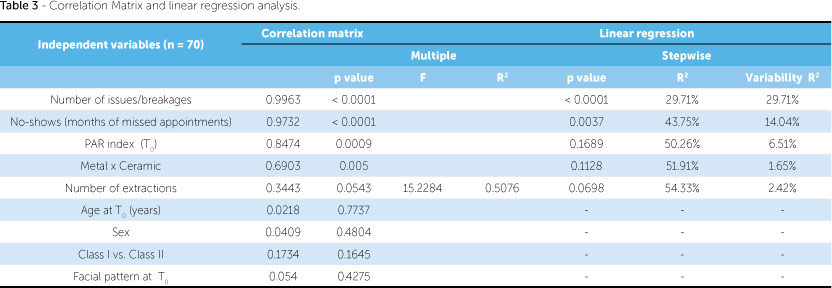INTRODUCTION: The length of time that it takes an orthodontist to treat adult patients varies widely. OBJECTIVE: The aim of this study was to investigate how different variables influence treatment time. METHODS: Seventy clinical case reports of successfully treated adult patients were examined. The patients were selected from 4,723 records held by three experienced orthodontists. The influence exerted by the following variables on treatment time was assessed: age, sex, facial pattern, severity of malocclusion (measured by the PAR index), sagittal relationship of canines, type of brackets (ceramic or metal), tooth extractions, missed appointments and orthodontic appliance issues/breakages, the latter being the dependent variable. Assessment was performed by multiple linear regression analysis, followed by the stepwise method with P < 0.05. RESULTS: The number of times a patient missed their appointment (no-show) (R² = 14.4%, p < 0.0001) and the number of appliance issues/breakages (R² = 29.71%, p = 0.0037) significantly affected variability in treatment time, and these two variables together can predict 43.75% (R² total) of the overall variability in treatment time. Other factors, such as canine relationship at the beginning of treatment, bracket type (metal or ceramic), tooth extractions, age at start of treatment, severity of the initial malocclusion, sex and facial pattern had no significant bearing on treatment time. CONCLUSIONS: The duration of orthodontic treatment in adults, when performed by experienced orthodontists, is mainly influenced by factors related to patient compliance. However, several factors which were not included in this study may contribute to variability in orthodontic treatment time.
Adult; Time factors; Orthodontics



